This article was published in the 185th issue of The Universe Space Tech magazine. It was written by Anna Berezkina, a researcher at the National Antarctic Research Center of Ukraine.
Throughout the history of mankind, the issue of survival and food supply for individuals, tribes, and communities has always been acute. This incredible pressure was only significantly reduced during the transition from hunting and gathering to agriculture and animal husbandry (after 11,000 years BC). This lifestyle revolution gave a strong impetus to a certain stability and growth of the Homo Sapiens population. Plant cultivation and cattle breeding emerged in a mosaic and independent manner in different parts of the globe. For example, since about 9500 B.C., eight crops have been cultivated in the Levant (Syria, Lebanon, Palestine, Israel, Jordan, Egypt, Turkey, etc.): wheat, barley, peas, lentils, bitter vetch, chickpeas, and flax. Pigs were domesticated in Mesopotamia around 11,000 years BC, and sheep — between 11,000 and 9,000 BC.
With the development of livestock raising, humans went through useful mutations, including genes that help them absorb lactose (milk sugar) from milk. Since it was not common for adults to consume dairy products before the advent of cattle breeding, they were extremely difficult to digest. However, in the Middle Ages, a beneficial mutation in lactose digestion emerged in Europe, and even more so, it spread very quickly among the European population of that time. One of the interesting hypotheses is that, probably due to the poor sanitary conditions in medieval cities, many people died from drinking unboiled water. Those who preferred milk with its beneficial microorganisms had every chance of a long and happy life.
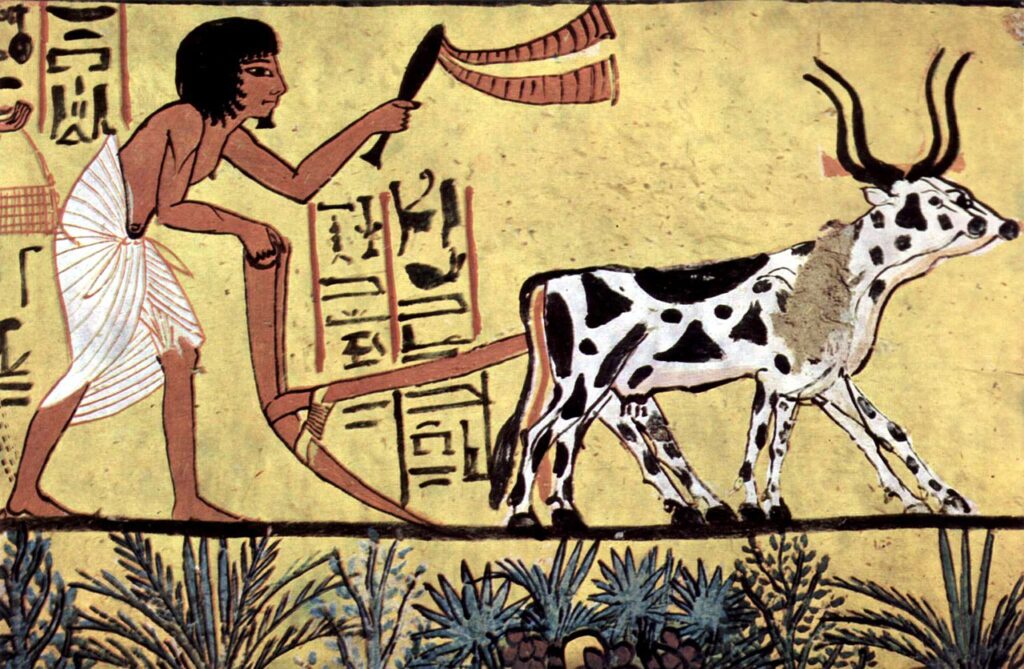
With the growth of the world’s population (now reaching 7.9 billion), the issue of food supply and hunger relief has once again become acute. This problem is exacerbated not only by the increase in the number of Homo Sapiens, but also by land and water pollution, global climate change, deforestation, and over-exploitation of soils, which provokes a rapid increase in desert areas. Arid lands account for approximately 41% of the world’s land area. One of the fastest growing deserts is the Gobi (in Mongolia and China). According to scientists, it annually absorbs more than 3370 km² of land.
The uncontrolled use of pesticides by corporations not only causes soil and water pollution but also leads to the death of insects, birds, small mammals, etc. All elements of the ecosystem are closely interconnected, and the disappearance of one link of living organisms can have irreparable consequences, as, for example, most plants cannot reproduce without insect pollination. Almost 87.5% of the species diversity of flowering plants on Earth requires the participation of insects and other small animals in pollination. Therefore, pesticide poisoning of pollinators (bees, wasps, bumblebees, beetles, etc.) dramatically reduces plant biodiversity, which in turn will lead to a reduction in the populations of animals that feed on pollen, nectar, plants, fruits and seeds, which will cause a chain reaction of reducing the diversity of larger animals and affect humanity itself. 75% of the world’s leading food crops show an increase in yield when pollinated by insects.
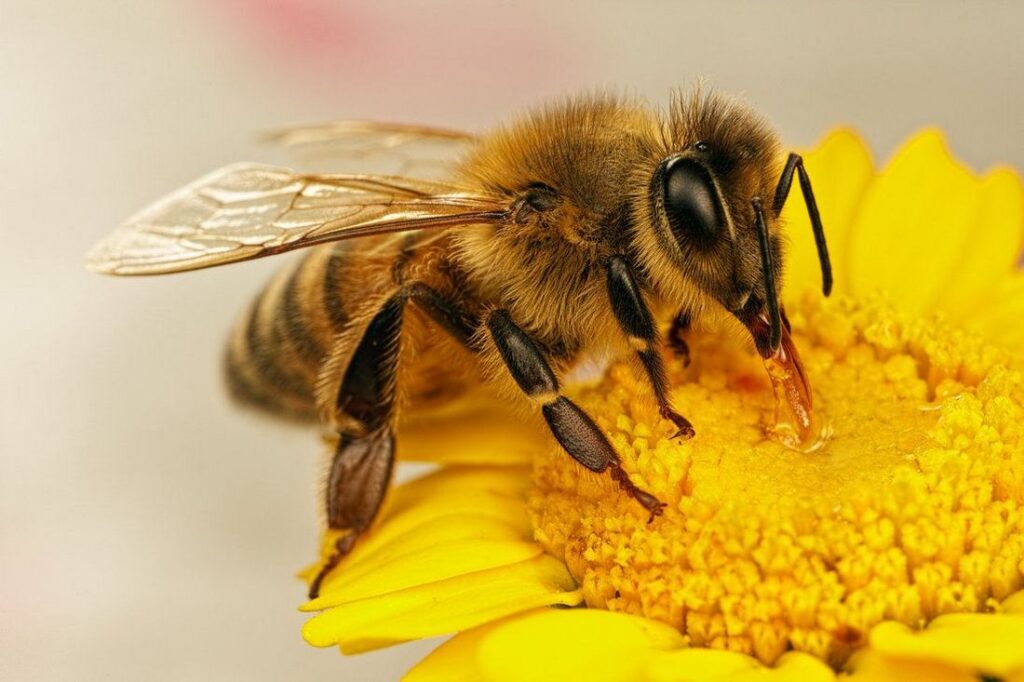
Thus, the issue of food supply should be approached systematically and take into account all cause and effect relationships. These issues are also very urgent for space mission support. There is an extremely interesting scientific project that makes it possible to realize commercial fish farming in space. As was shown during earlier investigations, the microgravity conditions on board the spacecraft (STS-65 mission) did not affect the ability of the Japanese medaka fish Oryzias latipes to reproduce normally. They successfully mated, fertilized, and the normal embryonic development of juveniles was observed, followed by their hatching from eggs. These data indicate that the Japanese medaka can potentially complete its life cycle in space (microgravity).
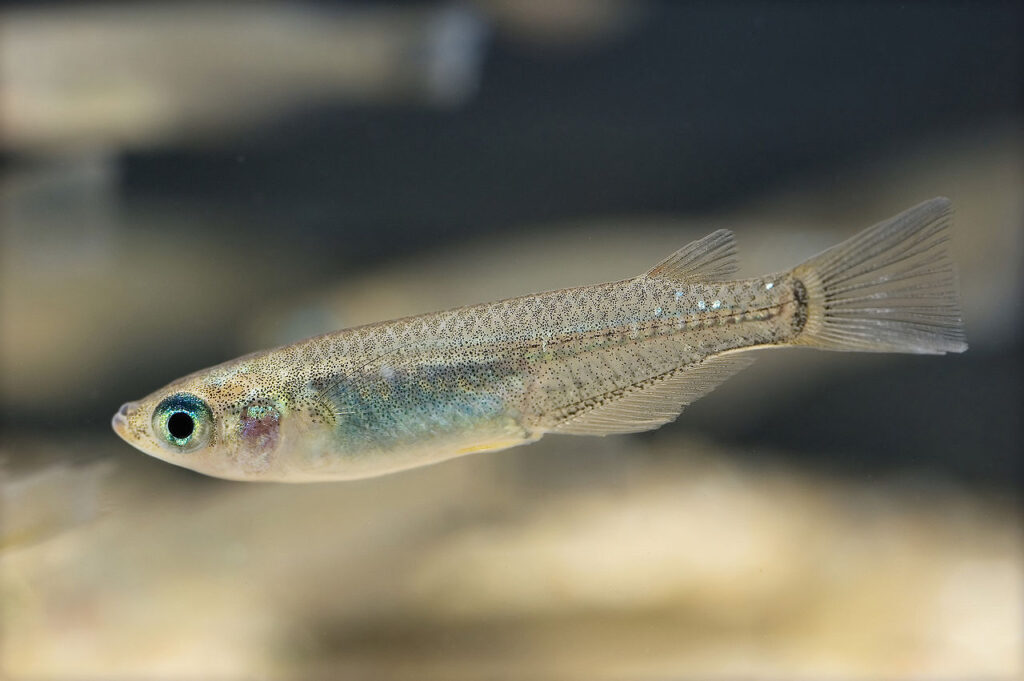
To realize a space fish farm, an effective system of biological filters is needed to ensure proper water quality during long-term aquaculture. They are extremely important because fish constantly excrete ammonia in their urine into the surrounding water environment, which is highly toxic to aquatic life. A biological filter with the ability to simultaneously carry out both nitrification (the process of oxidation of ammonia to nitric acid) and denitrification (reduction of nitrates to nitrites and then to gaseous oxides and molecular nitrogen) was designed for experiments with aquatic animals on the ISS. It was used to remove harmful ammonia in a closed water circulation system.
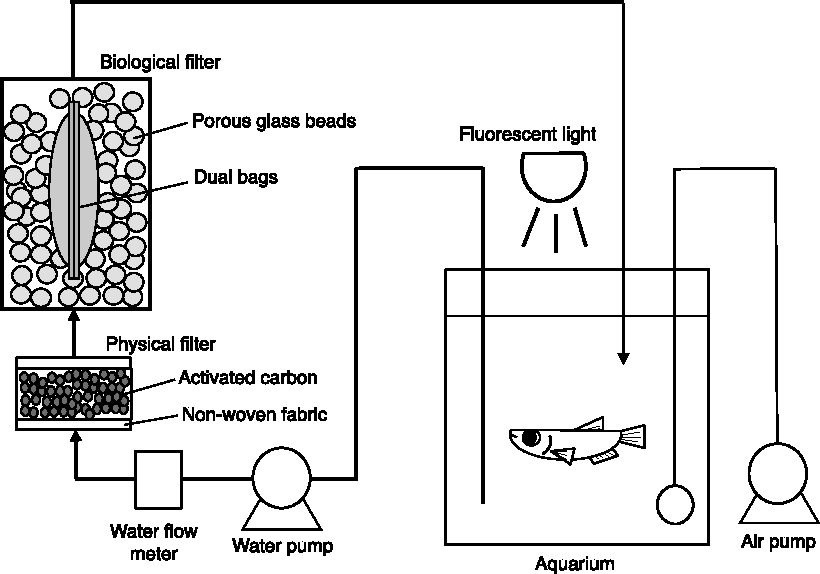
The biological filter is a cylindrical tank filled with porous glass beads with the bacteria Nitrosomonas Europaea and Nitrobacter Winogradskyi adsorbed on them, which carry out nitrification (oxidize ammonia to nitrite and then to nitrate), and double plastic bags where denitrification takes place. These double bags consist of an outer bag made of non-woven material and an inner bag made of non-porous plastic film. The outer bag contains immobilized Paracoccus pantotrophus bacteria. The inner bag is filled with 99.5% ethanol, which is slowly released into the environment and serves as an electron donor for denitrification (reduction of nitrates to nitrogen gas), which is carried out by Paracoccus pantotrophus bacteria. Thus, the biological filter removes ammonia without accumulating nitrate!
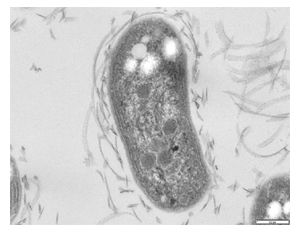
The small freshwater fish medaka was grown on the ISS for 90 days in a closed water circulation system equipped with a biological filter. All the animals in the experiment not only survived, but also had an excellent appetite. The results indicate that the biological filter’s nitrification and denitrification capabilities are sufficient to maintain water quality during fish farming on the ISS.
Thus, this research opens up new horizons in human space exploration, the possibility of growing such familiar earthly food during future space missions and during the colonization of new planets and space objects. Fish farms in the outer space are coming soon… And perhaps one day there will not be a single hungry person in the whole universe. Fortes fortuna adiuvat!

